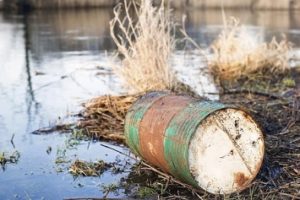EPA Administrator Scott Pruitt has made Superfund reform a top Agency mission. The latest step in that effort is the release of a list of 31 National Priorities List (NPL) sites “with the greatest expected redevelopment and commercial potential.”

“EPA is more than a collaborative partner to remediate the nation’s most contaminated sites, we’re also working to successfully integrate Superfund sites back into communities across the country,” said Pruitt. “Today’s redevelopment list incorporates Superfund sites ready to become catalysts for economic growth and revitalization.”
“Superfund sites on the list have significant redevelopment potential based on previous outside interest, access to transportation corridors, land values, and other critical development drivers,” the Agency adds.
On January 2, 2018, Pruitt announced that all or parts of seven Superfund sites had been deleted from the NPL. “This is more than triple the number of sites removed from the list in 2016,” stated the Agency.
Task Force Recommended Publicizing
In May 2017, Pruitt formed a Superfund Task Force that 1 month later provided the administrator with 42 recommendations to make the program more productive. One recommendation was that the Agency “publicize site-specific information, including reuse fact sheets to inform the community and developers about properties with reuse potential.”
Infrastructure in Place
The Superfund Redevelopment Focus List comprises sites from each of EPA’s 10 regions. All the sites remain on the NPL, which generally means that remediation of contamination is not complete, and there are institutional controls that restrict the types of development can occur. For example, activities that would disturb a capped area are prohibited. Also, development of residences, schools, and playgrounds is not allowed on sites where soil or groundwater contamination remains.
Business activity is already occurring on some of the sites, and all have existing infrastructure to varying degrees, including utilities, roads, accesses to rail, and buildings or foundations that can be used in redevelopment. Most of the areas are already zoned for commercial and industrial activity.
Fact Sheets and Additional Info
All of this and more is included in the fact sheets the EPA has written for each site. The fact sheets also summarize the history of the site, the source(s) of contamination, which remediation solution was selected, and the status of remediation. Information about the nearby population density and adjacent businesses is included.
The focus list also includes links to more detailed information about the history of the sites; which contaminants remain; regulatory status; and the roles of the EPA, potentially responsible parties, and the states in making the sites ready for redevelopment.
